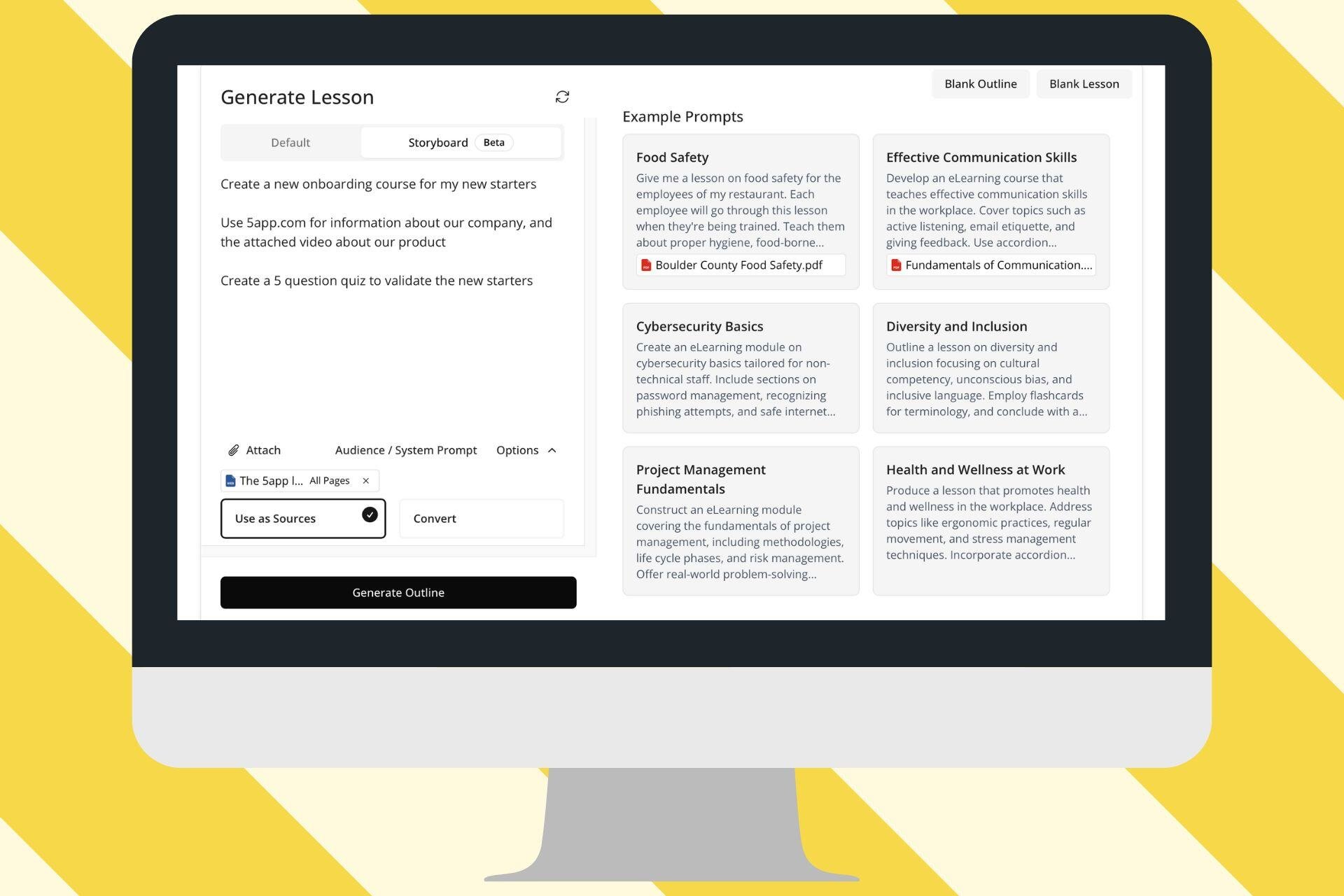The hybrid and remote working trend – if we can even call it a trend anymore – is here to stay. In 2025, we’re seeing the lowest rate of full-time office attendance ever. Even among the return-to-office mandates spearheaded everywhere from Amazon to the US government, today’s workers are fighting back, choosing to leave full-time on-site roles for those offering more flexibility and balance.
That means there are a lot of people currently looking for hybrid and remote roles, and the organisations offering them are finding themselves flooded with applications from talented employees seeking more modern ways of working.
But for some businesses, there’s one sticking point: onboarding. Remote employee onboarding brings with it a different set of challenges to traditional in-person onboarding, which can leave the experience feeling less robust and more of an afterthought.
The difference between in-person and remote employee onboarding
Day one in a new role looks very different depending on whether you’re in-person or remote.
In-person onboarding will typically involve a tour of the work site, introductions to whoever is around and a series of face-to-face meetings with your manager, HR and your teammates. A new starter will often be given a desk next to their ‘onboarding buddy’, and there will often be a welcome lunch sometime in the first week.
Remote employee onboarding is very different – but that doesn’t mean it has to be inferior! The new starter will usually log on, have a call with their new manager or HR first thing, get set up on various systems and be given a series of onboarding materials to work through. Over the first couple of weeks, they will have introductory calls with their colleagues, as well as being invited to recurring meetings such as company town halls, team stand ups and cross-department catch ups.
The unique challenges of remote employee onboarding
Anyone who’s undergone remote employee onboarding knows that the quality of the experience can vary wildly. While some people arrive to a structured onboarding programme, an attentive manager and a flurry of welcome messages for their new colleagues, others open up their shiny new laptop to find… well, nothing much.
Some of the most common challenges of remote employee onboarding include:
- A lack of direction – If you don’t have a formal onboarding programme, new starters can be left feeling unsupported or unsure what to do. Building an onboarding playlist (or separate playlists for each day of their first week) will help new employees stay focused on the right things, whether that’s HR forms, getting set up on your systems or accessing useful learning content.
- No point of contact – A new starter may feel awkward about ‘bugging’ their new manager with questions, so providing them with a buddy or mentor (usually a teammate) to support them through the early days of onboarding will help them feel supported.
- Not enough to do – At the end of each employee’s onboarding period, ask for feedback. Very often, new employees say that they finished their onboarding material very quickly, then didn’t know what to do next. Consider creating optional, supplementary materials or additional resources for quick learners, or show them where they can get a head start on their next learning.
- Knowledge gaps – If a new starter has been promoted into a more senior position, there may be knowledge gaps they need to fill before they can start performing their role. Reviewing the notes from their hiring process and interviews will help the L&D team give them access to the right upskilling and reskilling content from day one.
- Limited cultural integration – While it can be harder to feel like part of the team when you’re joining remotely, it’s definitely not impossible! Make sure at least some of your team calls are dedicated to social integration, and try to find a time for everyone to meet in person to accelerate the getting-to-know-you process.
5 top tips for remote employee onboarding
If it’s your first time orchestrating remote employee onboarding, or you want to make sure yours is hitting the mark, here are five top tips for a better onboarding experience, no matter where your new starters are based.
1. Send a physical welcome pack

Just because someone isn’t based on site, that doesn’t mean you can’t give them a welcome gift! Your welcome pack could include company merch (such as a pen, mug and notebook), tea and coffee, snacks and even a handwritten welcome note from the CEO or the new starter’s manager.
Many new employees appreciate these welcome packs, and will post them on LinkedIn as part of their new job announcement, so make sure it’s with them on their first day for maximum impact. Even something as small as a branded sticker can help your new employees feel like part of the team, and it brings some of the in-person connection into the remote employee onboarding experience.
2. Ensure a hassle-free IT and tech setup
One of the common frustrations with remote employee onboarding is that it can be trickier to get help with IT setup. In a traditional office job, the IT team will usually configure a new starter’s computer for them, including installing all necessary programs and getting them set up on the right networks.
For remote workers, the IT setup process will be a lot more DIY. If you can’t set up the new employee’s laptop in advance, schedule a session with the IT team on day one to ensure everything is properly set up and they have everything they need to complete their training, communicate with colleagues and start their job without annoying IT hurdles.
3. Schedule frequent check-ins for new employees and their managers
No matter how busy a manager is, they should prioritise making time to check in with their new employees. These don’t need to be long – 15 minutes a day or 30 minutes a week might be all that’s needed, but it helps new employees feel supported and gives them a chance to ask any burning questions.
It’s also important to make sure the new starter’s manager is available throughout the first couple of weeks in a new role. It sounds obvious, but try to avoid booking any long holidays over the initial onboarding period, and don’t turn off your Slack notifications. Make it crystal clear to new employees that they can reach out with questions any time, and ensure their teammates are primed and ready to help out to get the new employees the answers they need quickly.
4. Ensure all training is remote friendly
Some businesses deliver onboarding workshops to cohorts of new employees – especially when lots of people start at the company at once, such as seasonal retail or hospitality workers. That’s fine… as long as the training is convenient for everyone, and addresses everyone’s individual needs.
For remote workers, it’s not so easy to get everyone ‘in the same room’ – at least face to face. Replacing in-person, instructor-led training (ILT) with virtual onboarding sessions makes it significantly easier for everyone to attend, especially if they will be working remotely the majority of the time. This also means providing digital copies of the employee handbook, elearning courses and digital just-in-time resources, making it as easy as possible for everyone to find what they need, wherever they’re working.

Looking for a speedy way to create engaging elearning for remote employee onboarding? Register your interest in our new AI content authoring tool, VeeCreate, to stay in the loop!
5. Make effective use of your company comms
An often-overlooked channel for remote employee onboarding is internal comms. It can be easy to focus on the training and the team introductions, but the company comms provide a lot of useful context about what’s going on across the business, which in turn helps new employees embed themselves into the company culture faster. Ideally, this will all happen within the LMS to keep everything in one place.
Sending out a company update on a new employee’s first day is a nice way to welcome them to the team, and gives their colleagues a chance to leave comments or send personal messages. The new starter should also be added to any relevant groups to ensure they get the right communications, such as team-wide announcements and role-specific updates.
Choosing the right LMS to onboard remote employees
Of course, if you’re looking to deliver a remote employee onboarding programme, you’ll need an LMS to do it.
The best LMS for onboarding remote employees should allow you to deliver a streamlined, structured onboarding experience, combining learning and internal comms to help new starters upskill, reskill and integrate into the company’s culture in their first few days and weeks.
Companies like Hemsley Fraser, Greystar and Thomas Thor choose 5app for their onboarding because it’s intuitive, flexible and user friendly for employees and learning admins alike. In just a few clicks, they can create tailored onboarding Playlists, deliver them directly to new employees and track progress over time.
If you’re a smaller L&D or HR team, you may need some extra support to get your remote employee onboarding programme off the ground. Choosing an AI-powered learning platform means the LMS can take the heavy lifting of content creation and answering questions off your HR professionals, freeing them up to work on other priorities. 5app’s commitment to AI-enhanced learning makes it the best LMS for small businesses, as you can turbocharge your output with minimal extra manual effort.
